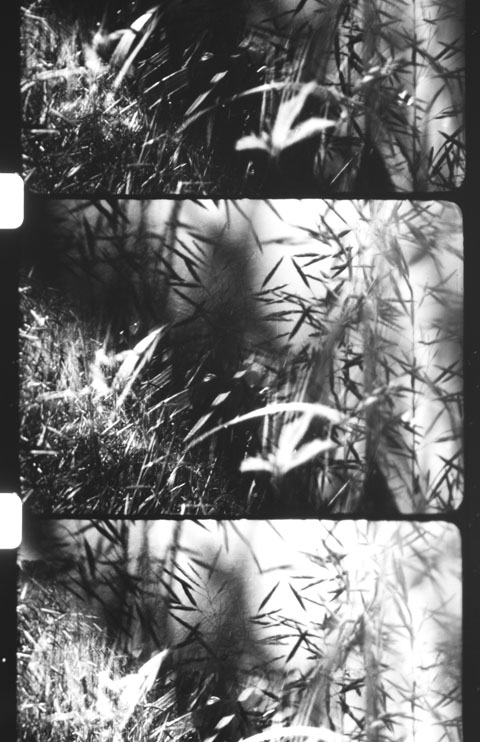Description of Work
I work in a range of media from photography to installation and from film to video
to digital. My earlier work in analogue photography and in painting opened up questions
regarding the nature of representation and temporality in the visual arts and I began to work
increasingly in time-based media arts of film and video. My training spans analogue and digital
techniques, from darkroom work to computer processing, from editing on a Steenbeck to nonlinear
editing, and my work continues to move between these different technologies and
techniques. For example in making, Dear Ruth, a site-specific installation exhibited as a part of
the Leona Drive Project, I, along with my collaborator Shana MacDonald, made use of both
miniature digital projectors as well as slide photography. In this installation, which reflects on the
way that objects can become repositories of memory, affect and nostalgia, we also combined
found objects with audio and re-photographed elements of a visual culture gone by. Within
contemporary media art I see both new and older technologies as offering distinct possibilities,
modes of expression, and insight. In fact, in my work I continue to search out and work with the
limits of the ever expanding technologies that make up the field of media arts. For example
different editing technologies and technique in time-based media offer different possibilities and
productive limitations. I have extensive experience working with non-linear editing software,
and particularly in my video, City Window, I utilized its capacity to blend different video
clips and work with varying frame rates. However, in developing my video 4C I needed to edit in
a way that was not possible with existing software, and so I worked with a computer programmer
to develop a custom application that would cut rapidly between four streams of digital video.
Following the completion of 4C, I began to explore further possibilities of this editing algorithm,
and in combination with my interests in polyphony and synesthesia, I made Shapes Eat Shapes.
Conversely, Film-Landscape-People: An Exquisite Corpse (co-made with Marcia Connolly) is an entirely in-camera edited handprocessed
16mm film, which produces unique image effects which are not available through
digital technologies. I also draw in other art forms into my work such as dance, sculpture, and
sound. In 4C I collaborated with dancers who created improvised performances in relation to the
technical apparatus, in my installation work projection screens become tactile elements, and in
my visual pieces I have examined the way that auditory principles can be applied to sight.
I also continue to work with 16mm film: during our current co-artist residency in Dawson City through the
Klondike Institute of Art and Culture, Marcia Connolly and I are making a hand-processed film investigates the dynamics of friendship.
Artist Statement
One of the things that is becoming of increasing concern to me is trouble of bringing a new thing/ a new articulation into the world.
When we contribute academic writing and also when we make artworks, what is it that we are doing? As we all continue to work in the academy we know
that we must contribute, and some degree of originality is required in order for our work to be considered an actual contribution to the field. In this way,
we are drawn to phenomena, to things, to events that are little known or scarcely discussed. In this way we contribute to what is known and also provide
articulation of phenomena, people, things that may have been excluded from the current or dominant discourse. That is, we find ways to make thetic what was
relatively unknown. The danger is this: that we bring what was in the shadows, what was ,cloaked in complexity into the open and in so doing leave it open
to manipulation. We live in a world that has a restless appetite for novelty. We, as academics and artists are often horrified by the way revolutionary
ideas and truly creative acts become appropriated by the mechanisms that are able turn anything and everything into a marketable product. I become
increasingly fearful of contributing to the process of making "unknown" phenomena palpable for consumption. Of course there remains something valiant in
giving voice to the silenced, but I am becoming increasingly sensitive to the care and recognition required in this so as not to simply open new things up
to interrogation and appropriation.
Certain questions, then, continue to hold me. How do we go about taking something on its own terms? That is, how might we resist simply translating a
certain phenomenon into palpable terms - terms acceptable to the dominating ethos of our time, and instead try to let the phenomena teach us the terms
appropriate to its description. How do we leave room for the unknown, even as we foster new articulations, whether it be writing or creative projects.
It seems that this is also a question of limits. How do we leave room for that which must remain hidden from any appearance, leave room for the
interiority, the depth of things?
|

"Light from the Ground"
|







